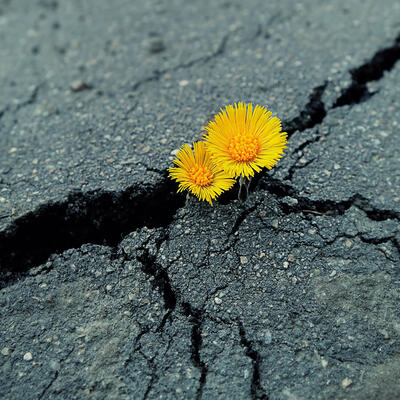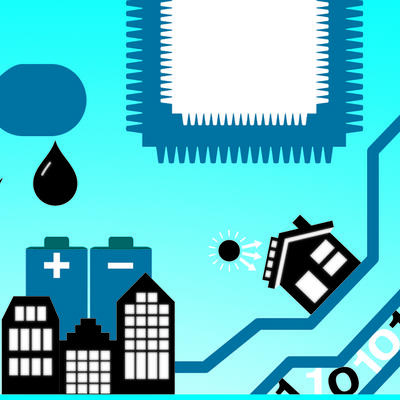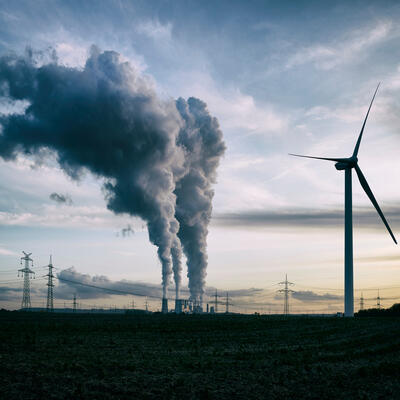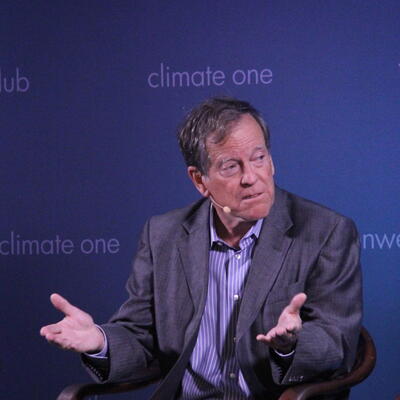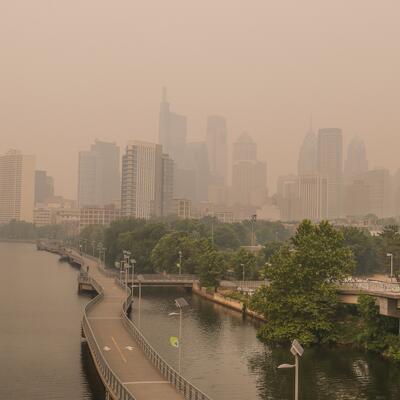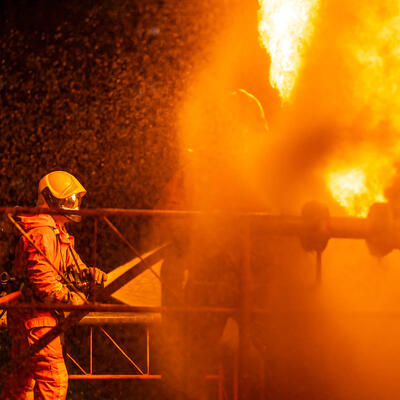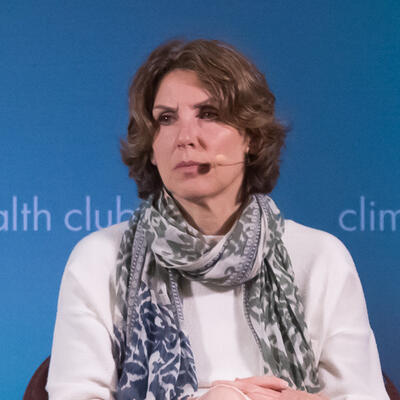
COVID-19 and Climate: Economic Impacts
Guests

Kathleen Day
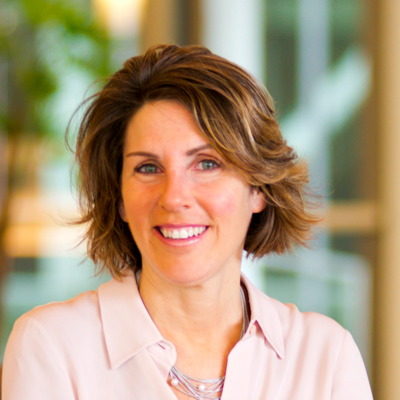
Amy Myers Jaffe

Matt Rogers
Summary
The COVID-19 recession has happened faster and hit deeper than most people could have imagined. Perhaps not surprisingly, the people most at risk in a shuttered economy are often the same people who are most vulnerable to the impacts of climate change.
“This crisis has served to expose some of the vulnerabilities of the economy,” says Kathleen Day, Finance Lecturer, Johns Hopkins University, “and one of those is that we have such a large number of people living from check to check.”
Day is author of the recent book, Broken Bargain: Banks, Bailouts, and the Struggle to Tame Wall Street and a student of economic crises in the 20th and 21st centuries. While every crisis is unique in its causes and effects, she believes that the current one may help recognize the links here between disease, climate, and the economy.
“I’m hoping there’s going to be some more thought about how to bolster the economy long-term and not just look for quick fixes from cheap energy,” says Day.
One result of the record-shattering economic collapse has indeed been a steep drop in energy prices. But that go-to economic sparkplug isn’t providing the boost it normally does – which opens a chance to think differently about coming out of this crisis.
“We have a really unusual opportunity now to really evaluate when we need to transport ourselves and when we don’t,” says Amy Jaffe, Director of the Energy, Security, and Climate Change Program at the Council on Foreign Relations. She believes the radical realignment of economic activity resulting from half the planet sheltering in place could fast-track technological replacements for some of our most destructive habits.
“The big trick on climate change is to change behavior and lower the use of fossil fuels,” she says, “and that means getting out of your car, that means not having extreme commutes, that means thinking thoughtfully about the size of your home and other kinds of things.”
So how will the coronavirus recession reshape the economy and prospects for addressing climate in a post-pandemic world?
“Now is the perfect time to actually make those investments,” says Matt Rogers, Senior Partner at McKinsey & Company. ”We've shifted the curve down and we now have the opportunity to lock in those gains and extend those gains and really take the next big risk off the table.”
Additional interviews:
Shubhayu Saha, Health Scientist, Climate and Health Program at the Centers for Disease Control and Prevention (CDC)
Phil Ting, California State Assembly Member
Related Links:
AB 1745 Clean Cars 2040 Act
Addressing Climate Change in a Post-Pandemic World
Broken Bargain: Banks, Bailouts, and the Struggle to Tame Wall Street
Climate and Health Program (CDC)
Energy, Security, and Climate Change (CFR)
This program was recorded via live stream on April 15, 2020.
Full Transcript
Greg Dalton: This is Climate One. I’m Greg Dalton. [pause] The COVID-19 recession has happened faster and hit deeper than most people could have imagined.
Amy Jaffe: The downturn can be very sudden. And I think the recovery is more gradual than maybe people are thinking.
Greg Dalton: The shutdown has come with some temporary environmental benefits. But crashing the economy isn’t exactly a climate solution.
Kathleen Day: I’m hoping there’s going to be some more thought about how to bolster the economy long-term and not just look for quick fixes from cheap energy.
Greg Dalton: So how will the coronavirus recession reshape the economy and prospects for addressing climate in a post-pandemic world?
Matt Rogers: Now is the perfect time to actually make those investments. We've shifted the curve down and we now have the opportunity to lock in those gains and extend those gains and really take the next big risk off the table.
Greg Dalton: COVID and Climate: Economic Impacts. Up next on Climate One.
---
Greg Dalton: How deep and how long will the COVID recession be – and how can we build a more resilient economy in its wake? Climate One conversations feature oil companies and environmentalists, Republicans and Democrats, the exciting and the scary aspects of the climate challenge. I’m Greg Dalton.
Greg Dalton: The economic collapse caused by the COVID-19 pandemic has shattered many records – and is still unfolding.
Kathleen Day: This crisis has served to expose some of the vulnerabilities of the economy. And one of those is that we have such a large number of people living from check to check.
Greg Dalton: Kathleen Day is Finance Lecturer at Johns Hopkins University and author of the recent book Broken Bargain: Banks, Bailouts, and the Struggle to Tame Wall Street. The people most at risk in a shuttered economy are often the same people who are most vulnerable to the impacts of climate change.
Matt Rogers: In the near-term we’re all focused on defeating the virus, but business leaders are now beginning to figure out how do we come back. And our view is quite clearly we can come back both cleaner and, importantly, more resilient.
Greg Dalton: Matt Rogers is a Senior Partner at McKinsey & Company, and co-author of a recent report addressing climate in a post-pandemic world. The usual economic sparkplugs like cheap energy aren't providing the boost they normally do – but that opens a chance to think differently about coming out of this economic crisis.
Amy Jaffe: We have a really unusual opportunity now to really evaluate when we need to transport ourselves and when we don’t.
Greg Dalton: Amy Jaffe is Director of the program on Energy Security and Climate Change at the Council on Foreign Relations in New York. All three of these experts joined us from their respective homes to explore COVID, climate, and the economy – starting with Kathleen Day offering a historical comparison between our current moment and other recent economic disasters.
Kathleen Day: Unfortunately the numbers of this crisis compared to the depression of the 1930s, even though the causes of this are very different and very different than other, every economic crisis is unique, but it also shares some components. One of course is it usually engender some unemployment. So unemployment during the 1930s reach 25%. And remember they didn’t keep numbers as well as we do now but still 25% is what people accept now. And the crisis of 2009 to 2012 was about 10% around the country on average, you know, some pockets got into the teens. We are already into the teens in the last three weeks up to 17 million people lost their jobs, and I've heard estimates from 13% to 15%. Some people think that's undercounting and some estimates say it will exceed the 25%. But at any rate it’s a lot and it’s swift and big. And that’s what is remarkable about it.
Greg Dalton: And we'll talk a little more about that later. Amy Jaffe, you’re an economic modeler. It went down fast, people are hoping it can come back fast also. Do we know what the shape you know the V shape or all these other shapes out there about when we’re gonna come back and how fast, do we know?
Amy Jaffe: Well, you know, I like to have a two historical references that come from the oil market and I think they’re both important. After September 11, Americans inside the United States stopped flying for a period of time. And actually we did not go back to normal domestic travel until 2004. So that can give you an idea of the challenge that we face getting people back out and circulating in airplanes again. All because this is actually probably less irrational than the way people felt after a terrorist attack, which is what are the chances you’re gonna had every week a terrorist attack in the airport. That was very low probability. So the second one I’d like to tell is what happened after SARS in China. And China SARS hit in the end of 2002 and Chinese citizens in Beijing and other big cities became afraid to use public transportation. And so car sales in 2003 in China were up 30%. So you do get these responses and then they sort of lay themselves out over time and it is not quite as I think the downturn can be very sudden. And I think the recovery is more gradual than maybe people are thinking.
Greg Dalton: Matt Rogers, your view on McKinsey, sort of, you know, how quickly we’ll bounce back or this gonna be a slow, uncertain climb out. It seems like time frames keep getting extended. We first thought this was weeks and now it's months and now we’re hearing, well, you know, maybe 18 months until there’s a vaccine.
Matt Rogers: Yeah, we’ve laid out a series of scenarios with McKinsey Global Institute that range from restoration of the economy in Q2 of 2021 to Q4 of 2024. I mean that depends really on how long we stay down because we’re down, much as Kathleen was talking about, we’re down much further I think than anybody expected. And there are certain parts of the economy that are gonna really struggle to come back. Amy hit on the oil markets as one of those examples.
Greg Dalton: And Amy Jaffe, there was an oil price war before this between Russia and Saudi Arabia. What's that about and isn’t cheap energy good for American consumers who are pinched right now, they're not driving but isn't generally cheap energy is good for the economy?
Amy Jaffe: Well, typically cheap energy is considered sort of like a stimulus. You know, if you’re a household you’re spending less on fuel and you’re spending less on travel and it stimulates people to travel. And on the flip side is for businesses I’m not having as high an energy cost so I can hire more people and support my business and the economy that way. The problem is because of the pandemic we’re not seeing a lot of those responses. It’s not really serving as a stimulus in the same way. People are not likely to take a driving vacation for Memorial Day weekend unless something really changes in terms of the pandemic. And I think it’s gonna be a while before people are back at the airports. So some of these traditional things that boost the economy when energy prices are low is gonna be much harder time to actually get that boost effect.
Greg Dalton: Matt Rogers, the U.S. is in a different situation energy wise than in previous crises. Because the U.S. says the domestic supply domestic production has grown so much lately. We basically kind of neutral at least the numbers I looked at 19 amount of oil that U.S. exports and imports is about the same. So how does that affect our position right now we’re not vulnerable to international energy markets, but we own it more of ourselves domestically because we pursue this energy independence under both Obama and Trump.
Matt Rogers: I mean the good news for the U.S. is we have hundred thousand plus people employed in the oil and gas sector in the U.S. and the challenge is that that is now under attack. And I think the question is how will employment hold up in that sector an enormously important part of the U.S. economy. And we’re in a situation where on the other side of the equation we have as Amy was saying, gasoline demand is down almost 50% jet fuel demand down 65%. So it’s really hard to get a stimulus benefit when you’re actually not using the product. And so I think we have a real challenge. Refinery runs in the U.S. in the second week in April went down a million barrels a day. But actual production in the U.S. actually only went down about 100,000 barrels a day. So we have a real imbalance with supply although rig counts went down in six weeks 25% it took 24 weeks in the last oil downturn to come down that many. So the supply side is trying to adjust but it is going to be a very difficult adjustment. We hit the brakes on the economy very hard very fast and we don't yet have the flexibility to adjust the industrial systems in the oil and gas sector at the same rate.
Greg Dalton: Kathleen Day, what are some lessons from past crises in terms of what works pulling America out of a recession. Of course it depends on what put it in the first place but what are some lessons from history?
Kathleen Day: Yeah, one thing is debt. And one of the lessons that we learned the hard way in the last crisis is that it wasn't that people needed more credit they needed less debt. So the stimulus package now if you give people a check and then they spend it they don't need one check they need a continuous source of income that they can use to pay their groceries and their rent. So I use this example of one of my local pizza places here in DC. The owners made a decision to close so that their employees could go on unemployment that gives them a regular check. Those people will be better off than waiting for a $1200 one-time stimulus. So many people in this country -- this crisis would be bad no matter what economically. But it has served to expose some of the vulnerabilities of the economy anyway. And one of those is that we have such a large number of people living from check to check. So any economic dislocation reverberates many times more with that group than with people who can work from home and continuing to get a paycheck and there’s other spots that are vulnerable. But how quickly we’ll recover, people are gonna be dying to get out of their house to get haircuts to go and see people again to go to work. We may never bring the handshake back the way it was. Maybe people will forever use fewer paper towels, I know I will. But I think transportation maybe not but I don't think there’s gonna be the fear of flying the way there was after the terrorist attack. But what I’m hoping is the residual effectiveness will be maybe to make people believe maybe this pandemic has something to do with climate. In any case, maybe we should take science more seriously and not dismiss it. And maybe some of those hundred thousand people who are employed in fossil fuels could be better deployed in renewable energy and in helping the infrastructure. So I'm hoping there's going to be some more thought about how to bolster the economy long-term and not just look for quick fixes from cheap energy.
Amy Jaffe: You know, not to be too technical but, you know, one of the problems we face that I think a lot of the listeners might not be aware of. When you put crude oil through a refining process each product it’s very hard to get only diesel fuel we need to have e-commerce deliveries and not get the jet fuel or not get gasoline or marine fuel. So one of the problems we have especially here in the United States but also somewhat globally. But definitely here in the United States is we’re running out of places to put all these jet fuel that we don’t need. And that can cause tremendous logistical problems because we need a certain amount of diesel fuel to move goods around. And if we run out of storage it’s gonna be very challenging logistically to keep the fuel system humming. And so I do think that’s something that companies have brought to the attention of the White House. There’s some companies that are looking to put jet fuel on ships and just float the ships around. People are thinking about what kind of storage facilities players might have that could be cleaned out and used just for jet fuel. Because we all saw the news reports about dairy farmers dumping their milk somewhere. But, you know, you can’t do anything like that with oil there’s no dumping it. So you either have to stop producing it and then you have to worry about what kind of dislocation that is gonna cause as we need one part of the barrel as we call it in the industry and not another.
Greg Dalton: Well, a lot of climate people would say, given the carbon budget. We only have 10, and McKinsey says maybe up to 20 years left of carbon to burn at current rates. Amy Jaffe, why don't we leave that oil in the ground rather than trying to refine it and store it in different places. We need to keep some of that carbon in the ground if we’re gonna meet the Paris goals and stabilize the climate.
Amy Jaffe: Well, we have a really unusual opportunity now to really evaluate when we need to transport ourselves and when we don’t. And we have a tremendous opportunity I mean we’re doing the show now, you know, over video and taping and we don’t all have to be in the same studio with you. And we’re now realizing that technology is pretty strong. But we’re also social beings. So the question is really going to be do we have the political will to make good choices about when we’re gonna use transportation and when we’re not. And I think, I feel a little bit more optimistic because we have a lot of technology that can be thrown at this. We’ve got, you know, automated vehicles coming. We’ve got, you know, delivery robots and delivery drones.
So the question is how can we organize when we come out of the pandemic to be more carbon efficient. And we need to do that and that will definitely keep oil under the ground. The question is though, what do we do about the automobile system. We have 271 million vehicles on the road today in the United States and only a million of them are electric. So the question is how are we gonna move that forward. How are we gonna stay out of our automobiles especially if people are afraid to use public transportation for a period of time. That is really the critical challenge. And to me, it’s gonna be a combination of increased use of digital, you know, maybe we don’t now have to commute to the office every single day. Maybe people could stagger when they go for in-person meetings. So we have a lot of flexibility to work on this problem but we must work on the problem from the demand side. When we work on the problem from just curtailing supply all you do is create tremendous dislocation. We need to work on the problem from the demand side.
---
Greg Dalton: You’re listening to a Climate One conversation about the economic impacts of COVID-19 and climate change. Coming up, why acting now matters.
Matt Rogers: What we’ve realized is we’re actually in control in a narrow band of reality. And if we break outside of that narrow band, all of a sudden we are not in control in the way that we thought we could. And the cost of remediation after we lose control is way higher than the cost of prevention today.
Greg Dalton: That’s up next, when Climate One continues.
---
Greg Dalton: This is Climate One. I’m Greg Dalton, and we’re talking about COVID, climate, and the economy with Kathleen Day, Finance Lecturer at Johns Hopkins University; Amy Jaffe, Director of the Program on Energy Security and Climate Change at the Council on Foreign Relations; and Matt Rogers, a Senior Partner at McKinsey & Company. Shubhayu Saha [shoo-ba-HA-yoo sa-HA] is a health scientist at the Center for Disease Control and Prevention. He was part of a CDC team that developed a process for local health officials known as BRACE or Building Resilience Against Climate Effects, which connects the economy, climate and human health.
[BEGIN CLIP]
Shubhayu Saha: There is quite a bit of literature and evidence out there which links fluctuations in temperature and precipitation and humidity due to the spread of infectious diseases. We’re seeing it in places where we haven't seen it before. In many cases there is a resurgence of some of these diseases that hadn't happen over a period of time. So it is definitely a huge global concern. It is important for us to, you know, not only estimate where the epidemiological burden is associated with these events as well as what the economic analogs are. You know, what was the healthcare costs associated with the particular heat wave what were the healthcare costs associated with an extreme flooding event, you know, things like that. Because as we, you know, work with policymakers if we are to provide economic estimates along with estimates around health impact they seem to resonate a lot better. Economics also comes into play when we are thinking about interventions, you’re gonna be working a resource constrained environment. And for us to have a sense of not only what interventions are effective but even the ones that are cost-effective. More public health practitioners at the community level at the county and the state level would benefit from that information. So individuals are being impacted in ways that we hadn't foreseen. The situation is imposing strain and stress on people that we haven't seen before. And so as the summer rolls in as it becomes extremely hot, people who have already been suffering economically and socially from the current situation would become maybe even more vulnerable to these extreme weather events. The stress that you people are going through right now. I'm afraid that some of that would make a lot of these communities a lot more vulnerable than they would have been let’s say even the next heat wave comes in.
[END CLIP]
Greg Dalton: That was Shubhayu Saha, health scientist at the CDC. Matt Rogers, your response to the comments there about the connections between health and climate. People often think of climate as smokestacks and tailpipes. They don't necessarily think of human health right away.
Matt Rogers: Well, the IPCC was a clear on the links between health and climate. The Stanford Woods Institute has also done a whole set of things. And again whether it’s mosquito borne diseases or whether it's climate change pushing animals out of their natural habitats and closer to human populations there clearly is a direct link. I think the other link that he highlights that’s quite important is a climate risk is actually quite regressive. It hits poor communities much harder than it hits rich communities. If you have air conditioning you’re much better able to deal with some of those challenges. If you're in a safe home you’re much better able to deal with it. And I think the regressive nature of on both the health issues and the climate issues are actually quite important and under managed in terms of the investments that we’re willing to make. So I think this is again, if we can learn some lessons from the current crisis not exacerbate them and prevent the next crisis at least a little bit. I think that's hope it gives us a little bit of upside as we go forward.
Greg Dalton: Kathleen Day, former White House Communications Director Anthony Scaramucchi said recently that this COVID is a chance to address the income gap which has grown in this country. There’s been stagnant wages gains mostly going to the very top of wealth as Matt just said climate and COVID are regressive. What examples are there from coming out of other crises where America has addressed the income gap the wealth gap in this country?
Kathleen Day: Unfortunately, there's not a lot of great examples. Possibly in the 1930s with FDR's programs and ways to provide a safety net. The most famous of which is deposit insurance on the money that you have on deposit in your bank. And believe it or not FDR was opposed to that by the way just to set the record straight. It was the Republicans who favored that. Some Democrats did but FDR himself thought it would cause some laxity on depositor’s part and in fact it did. And in the 1980s the Reagan and Bush administration were able to use deposit insurance to kind of hide the crisis. But anyway, that's a whole another story. So, but there is a whittling away that has been accelerated in the recent 15, 20 years in a diminution a cutting a shrinking of the middle class and we really -- that may be okay for people with air-conditioners for a while. But the people who make air-conditioners, who you gonna sell them to? Eventually, who’s gonna buy them? And in fact there’s a whole new phrase that’s appropriate, but frightening, it’s called the thrift economy. And it's from a consultant to the beverage industry saying how you’re gonna sell to people who don't have any money. How are you gonna sell to this increasing body of people who live from check to check the working poor. I would wish that there was some remedy, I’m not hopeful there’s gonna be one right away. But eventually we’re all going to have to think about it because you can't just sell luxury goods to 1%. Who’s gonna make them? Who’s gonna buy? It just doesn’t work. So it's something that people really need to think about.
Greg Dalton: Kathleen Day, another connection you write about is the pandemic of 1918 and the connection to the 1929 stock market crash. So how was a pandemic link to the crash of ’29?
Kathleen Day: Well, there were two things a couple things. Three main things. So the pandemic was devastating. It was depressing, people were dying. If I have my numbers right I think it was 675,000 people worldwide. There's a lot of people who died it was depressing. And then there was World War I also, many people died it was depressing. You go into the 1920s, one of the things that contributed to the go-go mentality that contributed to the go-go economy is people trying to forget those two onerous events. And coupled with a third thing which to me was I learned that the United States government sold war bonds for World War I because it was such an unpopular war and they were trying to get the American public to buy into it. So they sold war bonds in small denominations of $50 to $100 so that more people would buy-in. And that was the public the American public's first experience with securities really. And they bought these bonds and were paid back so they had some extra change in their pockets going to the 20s they wanted to forget the pandemic forget the war and it contributed to the boom cycle of the 20s. Now there were plenty sectors of the economy like farming and eventually manufacturing which in the 1920s were not doing well. But it was masked by the go-go mentality of the stock market and some other industries. But part of it was wanting to forget the pandemic and that may happen here where people really want to go out and get a haircut and they want to forget the fact that they couldn’t for several months. But, you know, you want to make sure that people do it in a way that is not crazy. But I don’t think that will happen here that was different. Those were three unique events. First experience with securities we need to forget those two bad events. But it did contribute mightily to the 1920 go-go.
Greg Dalton: So you don’t think we’ll have our own roaring 20s. Amy Jaffe, you’ve also written about that time. About 100 years ago when the way people got around in this country switching from horses to cars. Actually, tell us about the some surprising connection with actually electric mobility was king and something changed to put oil in the driver seat.
Amy Jaffe: Well, you know, it was a very interesting period of time. Around 1910 like at the peak there were many, many electric cars on the road, very few gasoline vehicles. And gasoline vehicles had a lot of problems. You know, when we think about gasoline now, you know, the oil industry likes to tell us that it was the winning technology and it’s the most dense fuel and electric cars don’t make any sense. But actually it was the opposite. Because when you think about it even today, I mean how often are you gonna go more than 30 miles an hour in the city. So in big cities like New York City, people who got around by vehicles call their local taxi company and they came and they took you around, especially wealthy women of a certain class. And then when the car battery would start to get low the taxi drivers would bring it back to the central depot. They take that battery out of the car, put in a fresh battery and go about their way. And so what actually happened building on what Kathleen said, is that we hit World War I and the Germans control the railroads in Europe. And the allies need assistance from the United States and what they need the most of? They need trucks to supersede the fact that they don't have access to the railroads to get manpower moved around soldiers moved around, and equipment moved around. And so the U.S. government uses like today something of the equivalent of the War Powers Act to tell Ford and these other companies that they must build trucks for the war effort. And that puts us squarely into a combustion engine platform in these factories for which we never turn back. And it’s a shame because now a century has gone by, and now we’re trying to make to shift back at least in urban settings to electricity because that can make sense and be easy to do. And we lost this whole time we could still be on electricity in New York City. And if you think about if we were how easy the carbon transition could have been if we had never moved away from electric vehicles in urban centers.
Greg Dalton: We’re talking about climate change and COVID at Climate One. I’m Greg Dalton. My guests are Amy Jaffe, Director of the program on Energy Security and Climate Change at the Council on Foreign Relations. Matt Rogers, a senior partner from McKinsey & Company and co-author of addressing climate change in a post pandemic world. And Kathleen Day, finance lecture at Johns Hopkins University, and author of Broken Bargain: Bankers, Bailouts, and the Struggle to Tame Wall Street. We’re gonna go to our lightning round now with some quick questions for our three guests. Beginning with Matt Rogers. On American shoppers, according to Walmart CEO Doug McMillon week one of quarantine was all about soap and hand sanitizer. Week two was toilet paper. Weeks three and four were spiral ham and baking yeast. Matt Rogers, what flew off the store shelves in week 5?
Matt Rogers: I was gonna say flour had to be go with the baking yeast had to be the next bite of that. And then maybe it was time to buy fruit again. I’m gonna be wrong.
Greg Dalton: Hair clippers and hair dye according to Doug McMillon. Kathleen Day, which group of phone apps have seen over a 60% increase since the quarantine started? Online dating apps, music streaming apps, online therapy apps or dog walking apps?
Kathleen Day: Wow. Dating?
Greg Dalton: Online therapy apps. Kind of make sense, people having a hard time with the isolation. Amy Jaffe, the IMF predicts the global economy will shrink by what percent this year? 1%, 3% or more than 10% according to the IMF world economic outlook.
Amy Jaffe: Well, I’m gonna say more than 10% because if they're saying something lower than that, they’re wrong.
Greg Dalton: They actually said 3% which seems low to me.
Amy Jaffe: Really? That seems optimistic to me.
Greg Dalton: It seems low to me. Also for Amy Jaffe. This is true or false, oil companies frequently deceive the American people?
Amy Jaffe: Oh, you’re putting me on the spot. I guess I’m gonna have to say yes to that one.
Greg Dalton: True or false. Kathleen Day, the Trump administration's delayed action on coronavirus cost the country a couple of trillion dollars?
Kathleen Day: I don't know if I can quantify the numerical amount, but it definitely cost money and sickness and probably lives.
Greg Dalton: True or false. Matt Rogers, COVID and climate are both black swan events?
Matt Rogers: That’s quite clearly neither is a black swan event. Both have been warned about for years and we have the opportunity to be fully prepared for at least climate if we actually take the scientific advice and the forecasting quite seriously. These are not black swan events. These are things that are well-known and risk that we should be prepared for.
Greg Dalton: True or false. Kathleen Day, the economic crisis has been good for sales of your book on economic crises?
Kathleen Day: That actually is true, unfortunately. Our people want to know how is it the same, how is it different. I’m sorry to say but I am glad people are reading it because my intent is to get people to understand these economic events that so affect everyone's pocketbook. This book is intended for mainstream readers to explain to them why we keep having these economic crashes.
Greg Dalton: True or false. Amy Jaffe, Californians talk a good game on climate but they could do a lot more to confront it?
Amy Jaffe: Oh, hundred percent. I know that’s gonna really upset your listeners. But the big trick on climate change is to change behavior and lower the use of fossil fuels. And that means getting out of your car. That means not having extreme commute. That means thinking thoughtfully about the size of your home and other kinds of things.
Greg Dalton: Also true or false for Amy Jaffe. Oil companies Total and Shell are making serious moves toward cleaner technologies such as batteries and hydrogen. True or false?
Amy Jaffe: They are. They are making big investments.
Greg Dalton: Also for Amy. True or false, Exxon Mobil's move away from fossil fuels are all BS?
Amy Jaffe: Well, I’d say there were things they’re doing that with work like carbon sequestration. And I guess they’ve made some investments in algae. But compared to their peers like Shell and BP and Total and the Italian and Spanish companies they are way behind.
Greg Dalton: This is a numerical single number. Matt Rogers, a maximum number of days you’ve gone without a shave while staying at home?
Matt Rogers: Two.
Greg Dalton: Two. Pretty good. Well groomed there. Kathleen Day, number of times your online classes have been Zoom bombed?
Kathleen Day: Zero.
Greg Dalton: Lucky you. Amy Jaffe, number of days of food you have in your home right now?
Amy Jaffe: You know, I’m a logistics person who studies logistics. So I’ve got like three weeks of canned food down in the basement in case something goes wrong with the fuel supply.
Greg Dalton: Amy is a prepper. Okay, first thing, this is association, that comes to mind. First thing that comes to mind unfiltered. Kathleen Day, when I say the group of corporate leaders known as the business roundtable?
Kathleen Day: Let's get all the benefits from taxpayers and not have any oversight.
Greg Dalton: Matt Rogers, first thing that comes to mind when I say Fed Chairman Jerome Powell?
Matt Rogers: Acted very fast at a massive scale.
Greg Dalton: Also, Matt Rogers what's the first thing that comes to mind when I say the phrase tragedy of the horizon?
Matt Rogers: Event horizon this is obviously from Mark Carney the Bank of England Governor who basically was saying all of a sudden if we actually take resilience into account, we’ll actually plan against events that might be more than a year out or two years out. And we need an event horizon that allows us to make investments in real resiliency. And we need to take advantage of time as our friend to reduce emissions today. And I think that is a really important idea.
Greg Dalton: Making time of our friend. Kathleen Day, what’s the first thing that comes to mind when I say Paul Volcker?
Kathleen Day: A wise and sage person who I will miss and the financial world is gonna miss. He was the honest broker everyone trusted and even if they didn’t like what he said they believed him and he had a great track record. He was a wonderful person and so smart.
Greg Dalton: Yeah, real honorable public servant from Reagan administration through many others.
Kathleen Day: Absolutely. And towards the end of his life was really trying to push against this idea that everything having to do with the government is bad, which is obviously ridiculous. We need government sometimes what we need is good government. That’s what he was pushing for.
---
Greg Dalton: You're listening to a conversation about the economic impacts of the coronavirus and climate change. This is Climate One. Coming up, changing how we do business to prepare for pandemics and beyond.
Matt Rogers: This just puts a greater emphasis on because this again gets at the resiliency of the supply base. How much inventory do I carry how long is my supply chain, you know, how robust are my suppliers. These are the kinds of risks that companies were underestimating and it's now become quite apparent.
Greg Dalton: That’s up next, when Climate One continues.
---
Greg Dalton: This is Climate One. I’m Greg Dalton. We’re talking about COVID, climate, and the economy with Kathleen Day, Finance Lecturer at Johns Hopkins University; Amy Jaffe, Director of the Program on Energy Security and Climate Change at the Council on Foreign Relations; and Matt Rogers, a Senior Partner at McKinsey & Company. Recording the program from our respective shelters-in-place means taking audience questions from social media. David Stevens on YouTube asked, “Economically speaking, how practical would it be to use our economic situation to implement the Green New Deal?” Another questioner asks whether there will be any money left for clean infrastructure given the surging national debt caused by the coronavirus crisis. Matt Rogers responds.
Matt Rogers: I think the other thing that should make us optimistic is we have interest rates close to zero. And the opportunity to make significant investments at very low cost in cleaner technologies and climate resilience is very good. The market is actually starting to price risk appropriately. One of the challenges is does the market actually price climate risk in. One of the things that we're seeing today is that companies that are involved in renewables are actually proving to be quite resilient in part because, this is something, A, that customers want. Sales of solar that allow you to control which you’re doing are actually going up in the current environment because it gives you control. And the market is actually starting to price risk so these companies are actually turning out to be quite resilient in a very difficult market environment. And so I think the idea that we can get low interest rates and adequate risk pricing should allow us to do the kind of capital formation that we need to do in order to both build back from a resilience standpoint and build back from a cleaner a standpoint. The opportunity to build back better is actually quite available today.
Greg Dalton: The solar industry said they’re concerned about losing half of the 150,000 jobs in solar. Melissa Lott, Amy Jaffe, someone you referred me to at Columbia says that the outbreak is introducing doubt into the renewable energy global supply chain. So can we afford to go green after this and will renewables be hurt?
Amy Jaffe: Well, I think that particularly the rooftop sector has seen a slowdown and there is been these disruptions for panel manufacturing. One would hope that would get resolved pretty quickly now that Chinese factories and others are coming back to work. But I do think that what we’re gonna see and we’ve already seen in the initiative like that in Europe and will be part of Europe's recovery is unfortunately countries are going to now realize if something is important to them and of vital importance like electricity. That they have to have supply chains that are closer to home. And I think you’re gonna see this idea that you’re gonna rely on one or two suppliers in different locations is over for now. Even with the COVID process here those companies that had 3D printing there's some innovative companies in California that have 3D printing, even the oil services company Baker Hughes was using 3D printing for certain kinds of drilling equipment they shifted a hundred percent to masks and other pharmaceutical needs for the United States. So I think that we’re gonna see the use of 3D printing accelerate more than it would have and I think it's gonna be put directly onto these vital needs that we need for basic energy, basic food, bio and health. We’re gonna see a much bigger emphasis now on how to make those things domestic products made here or in North America. And you’re gonna see a real change in how global trade takes place.
Greg Dalton: Matt Rogers, that’s quite a fundamental challenging of globalization partly sounds a little bit like Donald Trump there, you know, America first.
Matt Rogers: Well look, I think this idea of much shorter supply change is a very important one. We saw this trend happening even before COVID but I think this just puts a greater emphasis on because this again gets at the resiliency of the supply base. How much inventory do I carry how long is my supply chain, you know, how robust are my suppliers. These are the kinds of risks that companies were underestimating and it's now become quite apparent. The other thing, I’d build on Amy's comment, the reliability and resilience of the electric grid is more obvious than it has ever been. We always take that for granted but when we’re all sitting here at home and we depend on that. And the importance of the local utilities in being able to provide safe, reliable resilient power to everybody is more important than ever. And I think investing in that kind of infrastructure makes a big difference as we go forward.
Amy Jaffe: And that infrastructure is going to promote renewable energy and distributed energy. So smaller scale energy that can be repaired quickly. After these big events like Hurricane Sandy and so forth and even Hurricane Harvey in Houston. These mini-grids that companies had put in the grocery stores in Houston or some of the greener communities around New York City. They bounce back from these extreme weather events much more quickly than the centralized grid. And that’s I think where we’re headed with digital and electricity and it’s gonna be important.
Greg Dalton: And there's a more positive story for climate on the electricity side of the energy market than on the liquid transportation fuels. Solar and wind have displaced coal it's harder on the transportation side several countries and even a couple of automakers have signaled the end of cars that run on gasoline. That idea is dead on arrival in Washington DC right now. But California state assemblyman member Phil Ting introduced a bill that would allow only zero emission passenger vehicles to be registered in the state starting in 2040. That bill didn’t go very far and Ting pulled it when opposition arose from some surprising places.
[BEGIN CLIP]
Phil Ting: The basic idea is if you want clean air you need clean cars. And we’ve seen what would happen if we actually move to clean cars today. Without having millions of cars on the road every day we see for the first time in a long time L.A. has got three weeks running of clean air. The Bay Area air quality is significantly better. We know what the solution is we just haven't had the will or frankly some of the technology that's needed. I believe we need to set a deadline for any assignment. If you have an assignment without a deadline it never gets done. And so without having a deadline for when we need to transition to new clean cars completely. It's very difficult to signal to the industry how far along they should be how many cars should be selling. I voted for having that deadline by 2040 I’d hope that it would get further than it did. I thought that with so many other countries already moving this direction that us following other countries seem to be common sense. England, France, India, Norway have already moved to that deadline or even more aggressively. I was surprised about a few environmental groups as well as electric vehicle groups did not embrace this notion of setting a deadline. Trump had gotten elected most environmental groups were very afraid of the rollbacks that have now occurred. They are worried about how California moving in a certain direction was gonna hinder some of their work to hold the Obama gains together which have now been lost. Since then we’ve taken certain immediate steps. I had a bill last year AB 40 that also got held up. But we were able to put the point of the bill into the budget, which was to actually study how we get to clean cars by 2040. How many charging stations do we need how many different types of cars do we need. If someone wants to buy truck and there’s no clean option, they’ll still gonna go buy a truck. As you and I know the most profitable cars continue to be the biggest gas guzzlers whether it’s trucks, minivans SUVs are the ones with the worst gas mileage but with the highest profit margin. So really so many auto companies have been reticent to really move to clean cars.
[END CLIP]
Greg Dalton: That was California State Assembly member Phil Ting. Matt Rogers, a lot in there. But what I heard him say was U.S. not leading the next era of the personal mobility and auto industry, that's happening in other countries, and some surprising opponents to banning internal combustion engines. Your thought, Matt Rogers, on what Phil Ting just said.
Matt Rogers: Well, I think the most interesting thing to watch in electric mobility is China. China has been before the crisis talking about 30 by 30. 30 million electric vehicles coming out of China by 2030. That’d be 15 million for the domestic Chinese market and 15 million for the export markets. The world market is only 100 million vehicles a year so this is about taking market share. And China believes that they can as they’ve done in solar that they can build electric vehicles better than anyone else in the world can. And that can be a new source of industrial profitability and growth for the country. And so people sort of look at, you know, what's going on fuel emissions regulations and things like that. Look at China 2025, that’s kind of the point at which the shift over in Chinese production would need to occur to achieve the 30 by 30 kind of idea. And that idea would change the global automobile industry in a very short period of time.
Amy Jaffe: Hey, Greg, let me just jump in here with a quote from James A. Baker III, our former secretary of the state and former secretary of treasury. This is an article that ran today in Foreign Affairs. “The winner of the emerging clean energy race will determine the economic and geopolitical balance of power for decades to come.” And he argues that we are behind the times and we’re letting China get the lead and we need to fix it and I agree 200%.
Kathleen Day: I agree, 300%. Absolutely. China every day is laying miles of fast train tracks. We’re doing nothing. Our infrastructure is crumbling while they are making a spanking brand-new clean up-to-the-minute transportation system that help run economies. What are we doing?
Greg Dalton: And so that really raises the question how we invest, Matt Rogers, there’s been very little green infrastructure in the current recovery measures coming out of Congress. Was different than when you are involved in the Obama administration there was a fair amount of clean energy in the stimulus. But it seems these days all the money coming out of Washington is going toward fossils and legacy energy.
Matt Rogers: Yeah, we’ll see what the stimulus bill includes. Obviously in the prior administration we spent about $100 billion on clean energy and importantly in doing that it was both about deploying existing clean energy technologies and then driving a rate of innovation that would put the U.S. ahead in the set of technologies. We ran 50 different battery technologies in different business models and you take a look at the role that batteries are now beginning to play in the U.S. grid. Investments in innovation really matter in addition to investments in infrastructure. And I think if we can as we look forward on stimulus I think those will be markers about how healthy we are coming out.
Greg Dalton: Amy Jaffe, you're involved in the Women in Energy initiative at Columbia University. And there’s been report recently by CNN that countries led by women have been responding to the coronavirus have been the ones that have bent the curve most successfully. So your thoughts on Taiwan, New Zealand, Germany looking around the countries that have responded best to COVID are led by women.
Amy Jaffe: Well, you know, women are underrated leaders. One of the interesting things is this academic study show that, you know, corporations and I’m sure it’s the same thing for government that have a certain percentage of women on their board of directors or in their c-suites performed better than companies that don’t. And one of the things that determines that has to do both with innovation tend to be more innovative, more creative. And also less after take failed risky strategies, you know, sort of like Enron like strategies. But the other study that shows which is just really a terrible thing is that companies who elect a woman chairman run the risk that investors will reject that company for a period of time when the woman is first in tenure. So we still have a lot of unconscious bias that is holding us back from the contribution that women in leadership roles can really provide key advantages. And some of that advantage is not just women versus man it has to do with diversity in general. Whether that’s diverse backgrounds people of different colors, people who have grown up under different socioeconomic means. We really wanna do what we really have found in the studies at Columbia, a brilliant professor named Katherine Phillips, is that working groups of professionals that have more diverse backgrounds. It takes them longer to come up with the consensus decision but they are right 80% percent of the time as opposed to a group where it is homogeneous, is only right like 30% of the time. And so it's really important to take advantage of the diversity we have here in the United States both on gender and more broadly. And we really lose the opportunity to have better solutions and better leadership when we exclude groups.
Greg Dalton: As we get to the end I want to think of big ideas, Kathleen Day, sometimes crises generate big ambitious plans and ideas. What were some of the bold ideas if you were to have based on your studies of past economic crises? What are some big ideas America ought to be thinking about as it tries to get through this COVID crisis?
Kathleen Day: Well, I know no one wants to talk about financial oversight and regulation. But I think it’s not a new idea that comes out occasionally. It's one that people rediscover after every crisis because they forget it a few years after every crisis. And that is starting with the founding fathers. One thing that Jefferson and Hamilton agreed on even though they disagreed on whether we should have a proliferation of banking. They agreed that if you do have it, you need to have oversight. People forget that being a corporation is the designation that a government gives you on behalf of society and people. And as part of getting that designation being a corporation on having limited liability for your shareholders so you can raise more money. Part of that obliges the government gives an obligation to the government to go and make sure that their corporation isn't doing things that are harmful for society. So I wish people would remember that corporations in particular in the financial sector which are both corporations and they have other benefits from taxpayers. They need oversight, common sense oversight. And we abandon that a few years after every crisis.
Greg Dalton: Matt Rogers, big idea coming out of COVID to address climate and the economy?
Matt Rogers: Massive investment in climate resiliency and in cleaner technologies we have. Now is the perfect time to actually make those investments. We've shifted the curve down and we now have the opportunity to lock in those gains and extend those gains and really take the next big risk off the table.
Greg Dalton: Amy Jaffe, last word. Big idea America ought to be thinking about at this time?
Amy Jaffe: You know, digital revolution, we need to be investing every dollar we have on the recovery in training people to enter the digital economy. Looking at the digital opportunities to reduce emissions. Looking at how we move forward with these technologies that we’re currently using to cope with this crisis whether its 3D printing. We're doing this show over you know, social media and digital. Like how to tap these new capabilities we have in a way that makes our economies strong and resilient globally and keeps us safe.
---
Greg Dalton: You’ve been listening to a Climate One conversation about the economic impacts of the COVID pandemic with Amy Jaffe, Director of the Program on Energy Security and Climate Change at the Council on Foreign Relations; Matt Rogers, a Senior Partner at McKinsey & Company, and co-author of recent report addressing climate in a post-pandemic world; and Kathleen Day, Finance Lecturer at Johns Hopkins University and author of Broken Bargain: Banks, Bailouts, and the Struggle to Tame Wall Street.
Greg Dalton: To hear more Climate One conversations, subscribe to our podcast apple podcasts, Spotify and other platforms. Please help us get people talking more about climate by giving us a rating or review wherever you get your pods.
Greg Dalton: Kelli Pennington directs our audience engagement. Tyler Reed is our producer. Sara-Katherine Coxon is the strategy and content manager. Steve Fox is director of advancement. Devon Strolovitch edited the program. Our audio team is Mark Kirchner, Arnav Gupta, and Andrew Stelzer. Dr. Gloria Duffy is CEO of The Commonwealth Club of California, where our program originates. [pause] I’m Greg Dalton.
